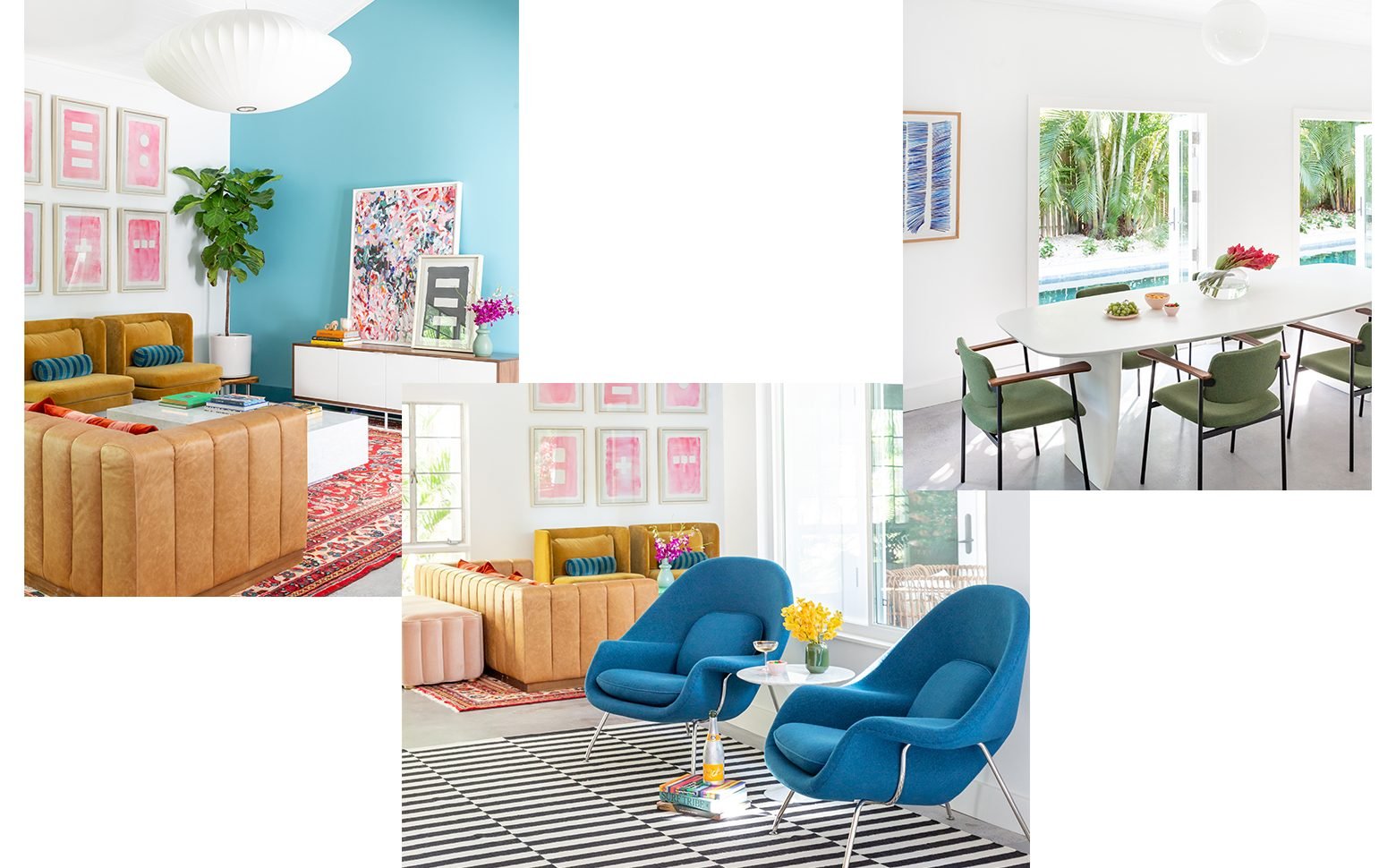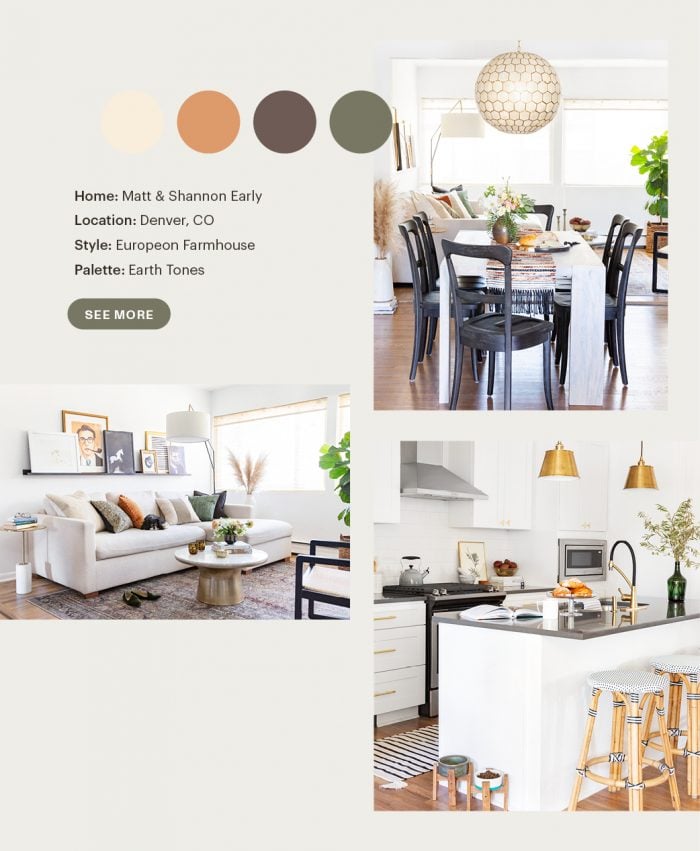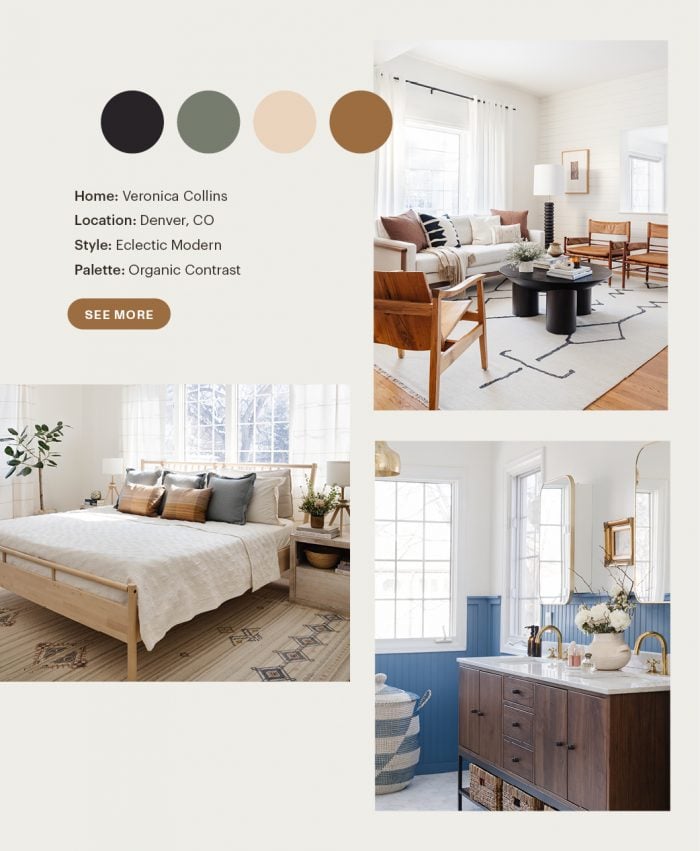Selecting a color palette for a single room is simple enough. But deciding on an overarching color scheme for an entire home, from the guest bath to the basement? That’s another story. It involves flawlessly mixing rugs, paint colors, upholstery, prints, artwork, and furniture finishes across 1,500-plus square feet, without a single off-putting hue or stray pattern pop. Could it get any more daunting?!
Fortunately, it’s not as hard as it looks. “Planning out your homes’ color palette ensures visual flow throughout your space,” explains Havenly designer Heather Goerzen. “With a little forethought, you can eliminate jarring color moments, like having a loud, bright blue bathroom next to a warm minimalist living room.”
With a bit of planning and a few design principles in mind, you can easily create a cohesive, whole home color palette that unites your entire space. But before we get into her thoughtful tips, let’s start with the basics:
Primer: Color Wheel 101
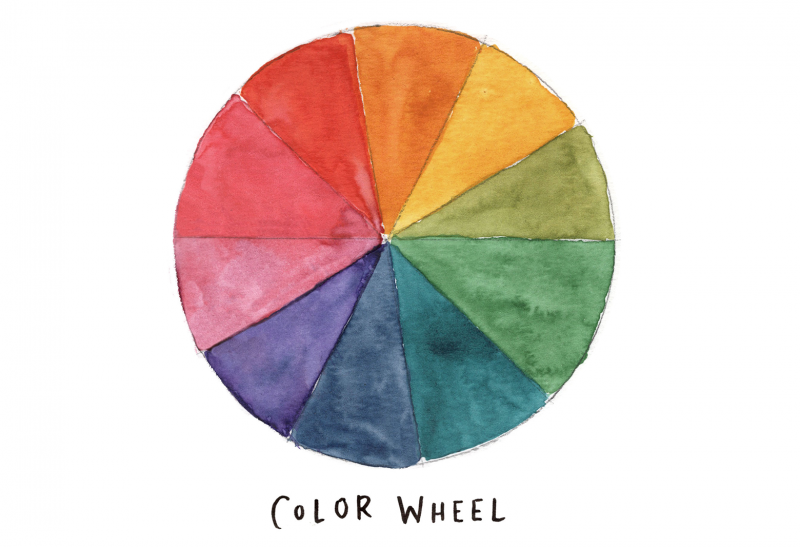
Excuse us while we throw it back to third grade art class for a minute. The O.G. color wheel is a great source of inspiration when selecting accent colors for your space. If you don’t remember how a color wheel actually works, don’t worry — we’ll fill you in:
First, locate your dominant color on the color wheel (notice that black, white, and shades of grey are not included here). The colors on either side of your dominant hue are considered “analogous,” or adjacent colors, and will add depth and variation to your main color. For example, blue’s analogous colors are purple and green.
The colors across from your dominant hue are complementary colors. So, green’s complementary color is pink, blue and orange are a pair, and so on. Obviously, these matches are a bit more bold, but it’s a surefire way to create a high-contrast palette for your home.
Lastly, monochromatic color palettes include different shades of the same color. It’s a great option if you lean more minimalist and understated. Now that we’ve gotten a better sense of the philosophy behind color paletting, here are a few sample palettes to inspire the design of your own space — and a few tips that explain why, exactly, they work.
1. Establish your mood
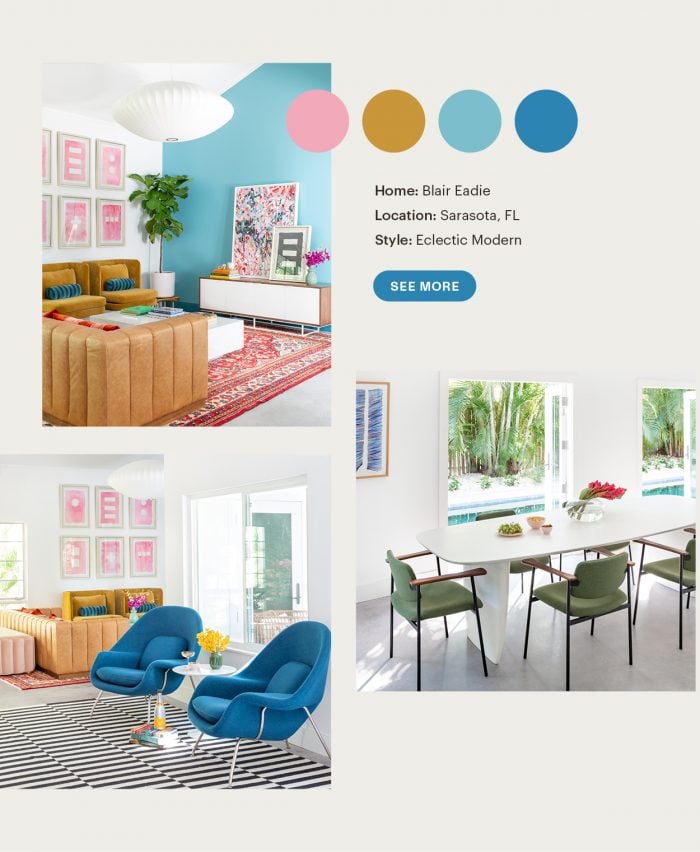
Before we even get to color, first decide how you want your home to feel. Different colors cue different moods, so reverse engineer your palette starting with the ideal atmosphere. Want something that feels relaxed and calming? A neutral, organic palette could suit you, or maybe even grounded nature-inspired colors. Is playful and energetic more your speed? Go big and bold with a more vibrant whole home color palette, like this eclectic modern palette.
2. Survey your home

Before you commit to a paint color or a vibrant rug, take a moment to walk the length of your floor plan. Stand in each space, hallway, and doorway and take note of the other areas in view. For example, if you’re in your hallway and you can see both a bedroom and powder room simultaneously, you want to make sure those spaces harmonize and talk to each other. Keep in mind that neutrals — like those in this chic, Parisian-inspired palette — can create visual “breathing room” to bridge two more colorful rooms.
3. Select your dominant tone

Secondary colors and vibrant accents are essential, but selecting your dominant hue will set the stage for your whole home color palette. If you’re stuck, consider turning to your closet for inspiration. If it’s filled with blacks and neutrals, a minimalist color palette will likely suit you. If all your clothes range from navy to pale blue, then this is probably a good jumping off point for your home. Lots of muted rusts, greens, and sands? You might be someone drawn to organic earth tones. You can even find a palette that combines all the things you love, like this organic glam palette that pairs soft neutrals with more luxe metallic accents.
4. Consider your homes' architecture
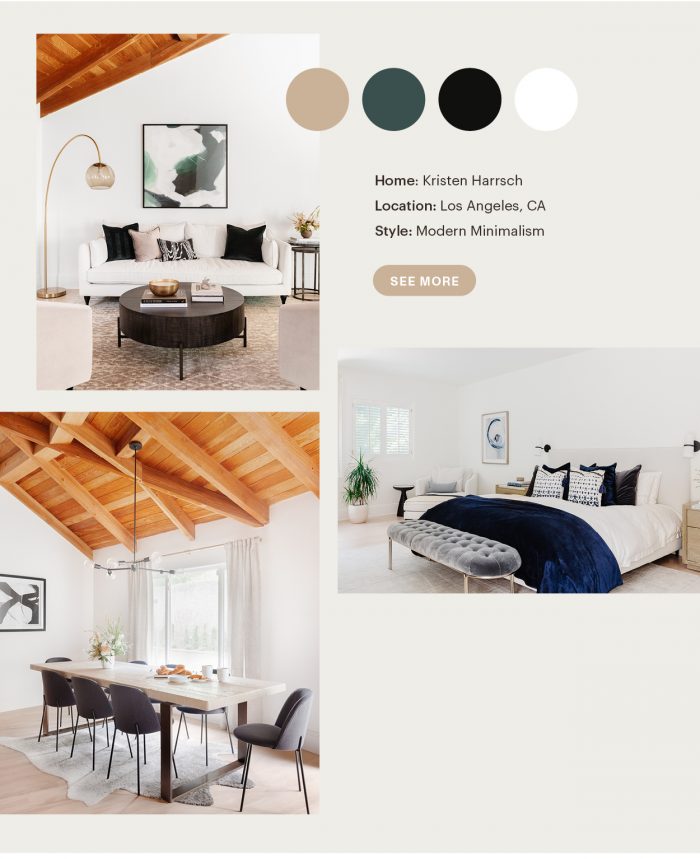
Not only do you want to love your color scheme on a personal level, it should feel natural within your home, too. For example, if you have beautiful, rich wood floors or exposed ceilings throughout, a super cool color scheme might feel like a mismatch whereas a modern high-contrast ensemble is just the ticket. Or, if your home leans more traditional, consider a more muted, timeless color scheme. A warm neutral palette complements the light oak floors and exposed wooden beams in this home.
5. Remember: repetition is key
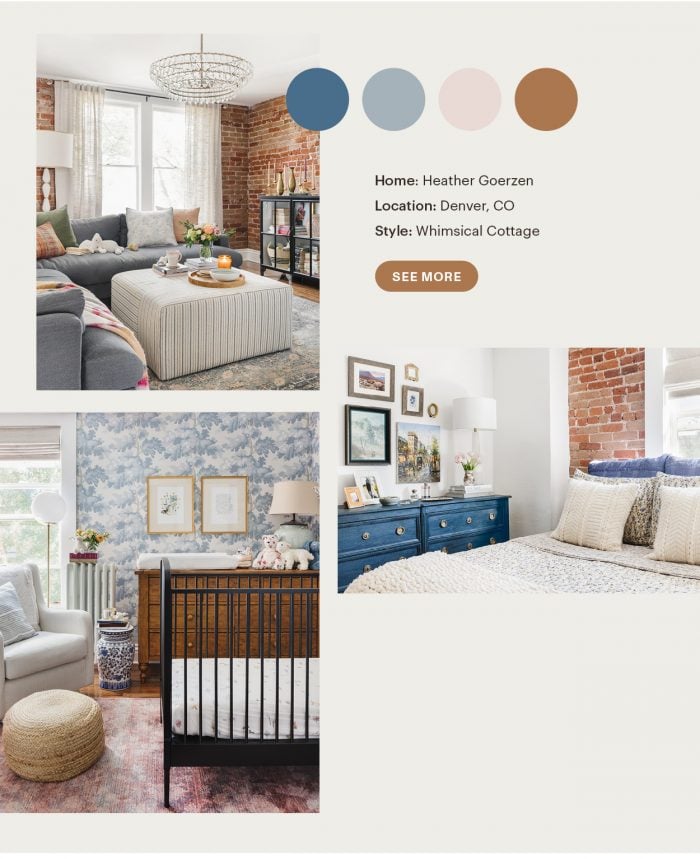
You of course want to weave the dominant tone throughout your home, but try to do so in new and interesting ways. In the above home, for example, blues are seen predominantly in the sofa and rug in the living room. The hue is carried through to the wallpaper in the nursery, the bedding in the bedroom, and the cabinetry in the kitchen. The soft and romantic color is consistent throughout, but the variation in application (from furniture to cabinets) keeps it feeling fresh and unexpected.
6. Work within a spectrum
You definitely don’t want a dated “wedding color scheme” look, where you have the exact same two accent colors repeated throughout the space. Instead, work within a color spectrum. If you’re drawn to earth tones, for example, use a really light terra cotta in one space, and a more spicy rust in another. They’re shades of a similar tone, instead of the exact same color repeated throughout.
7. Add in an unexpected pop

Whether it’s a bold pattern or a vibrant color, adding a “wow” moment or two keeps things interesting. Remember, the goal is cohesion without monotony — feel free to weave in an unexpected but complementary color via a statement chair, surprising wallpaper or tile, or even a signature piece of bold art. If you’re working with a color palette full of jewel tones, for instance, consider throwing in some bright fuchsia.
8. Consider shared spaces vs. private spaces
Working within your whole home color palette, go for something more versatile and understated in shared spaces, like the living room, dining room, and kitchen. Conversely, feel free to get a bit more bold and playful in more private spaces, like a small powder room, main bedroom, or even a kids playroom. This organic contrast palette leaves some flexibility for pops of color, sacrificing the flow from one space to another.
9. Mix up your materials

A good way to make your home color palette feel dynamic from room to room is to bring in different textures and materials. Sticking to neutral hues? Consider leather or rattan accents. Favoring a mostly white space? Consider bouclé and faux fur. Different textures will also help bring added dimension to your space and prevent your design from looking monotonous.
10. Go low-contrast
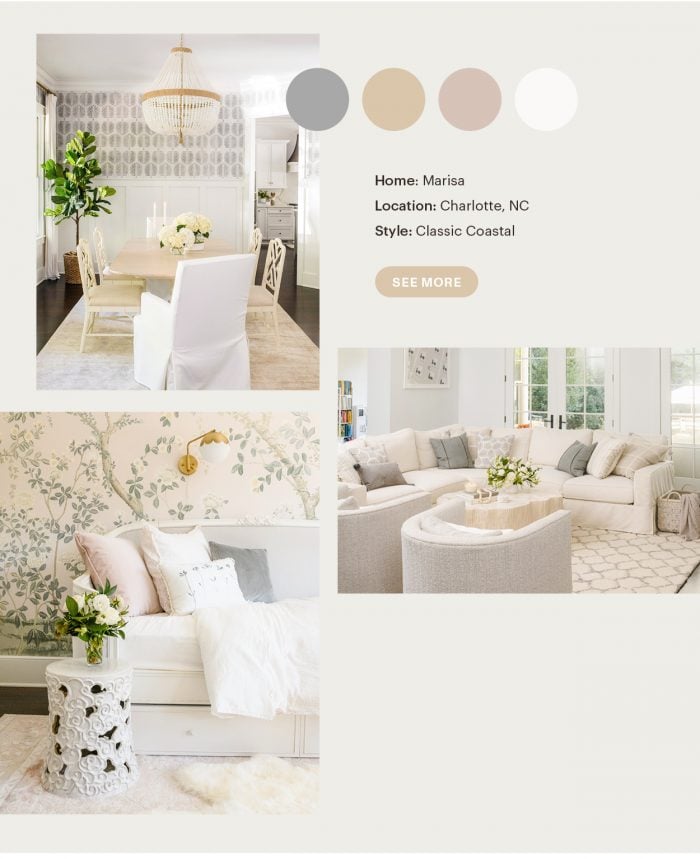
You don’t have to go full monochromatic if you want your space to look bright and soothing. Instead, stick to colors that aren’t just similar in shade, but similar in intensity. This glamorous coastal space favors a low-contrast approach, bringing together a mix of creamy whites and the occasional pop of light pink, green, or beige.
11. Start with a neutral base
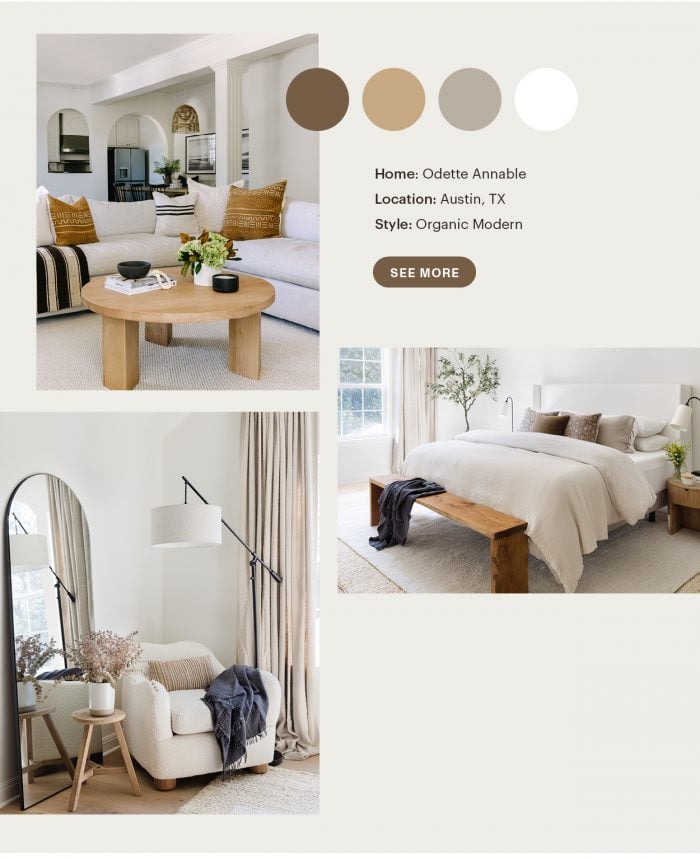
You can hardly go wrong with a good white wall. And contrary to what you might believe (or might have been told), there’s nothing wrong with using the same white paint color throughout your entire home. In this cozy home, which favors soft, organic shapes, a backdrop of warm-toned white makes the perfect foundation for other natural neutral hues to complement one another.
12. Invert your color scheme from room to room

When you’re trying to design a home that feels harmonious, it’s important to think about how to create balance in each room — and how you can maintain that balance throughout the whole of your home. This eclectic space, for instance, has a dynamic feel thanks to its mix of neutral hues, in both light and dark colors; no one room looks overly bright or overly moody, giving the home a sense of continuity.
13. Pick your color intensity
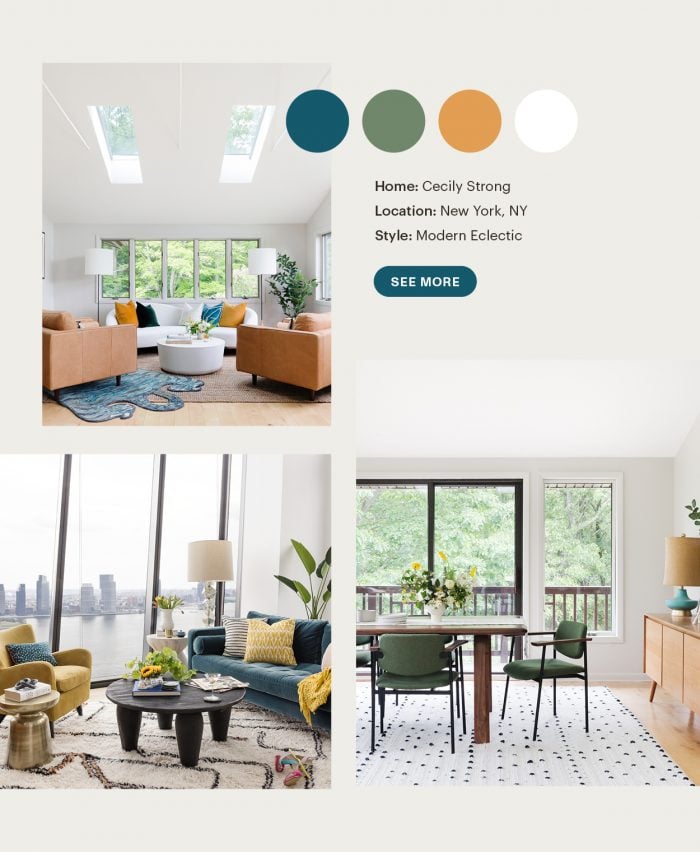
Vibrant colors may seem more naturally suited towards eclectic or even bohemian styles, but they can work just as well in sleek, modern spaces. They can feel a bit more versatile when they come in more muted hues — like the soft turquoise, emerald, and marigold in this home. These colors also pair easily with a warm neutral color palette to create an overall balanced look.
14. Use greenery to your advantage
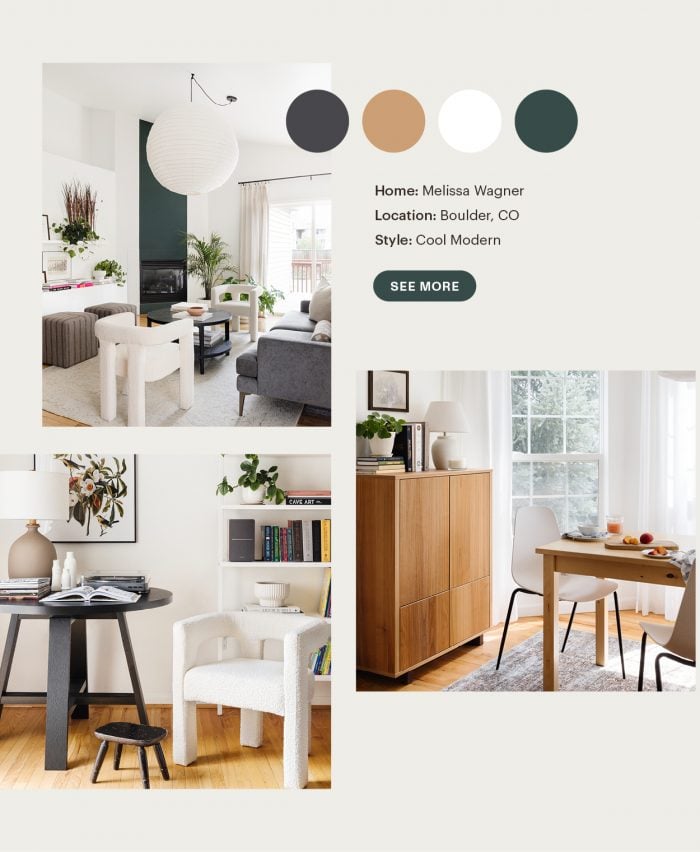
If you thought accent walls were the only way to bring a splash of vibrance into an otherwise neutral space, think again. While the majority of this contemporary home is outfitted in cool neutral tones, plenty of green foliage throughout the space brings in a bit of color. A blue built-in headboard in the bedroom and an emerald wall panel in the living room pair well with these natural pops of color and bring a sense of playfulness to the the otherwise cool, neutral palette.
15. Use textiles strategically

Never underestimate the impact of a throw pillow, rug, or wall hanging — in a lot of instances, these are the details that can complete a space’s design! Especially in more eclectic spaces that might incorporate a wide range of punchy colors, textiles are a great way to create a distinctive theme, in as big or small a way as you’d like.
16. Take a temperature check

Not all neutral hues are a match — which means working with this kind of color palette may not be as easy and foolproof as you’d imagine. Luckily, you can follow a straightforward rule of thumb: Pick neutral colors that have the same warm or cool undertone (in the case of the above home, warm).
17. Get detail-oriented
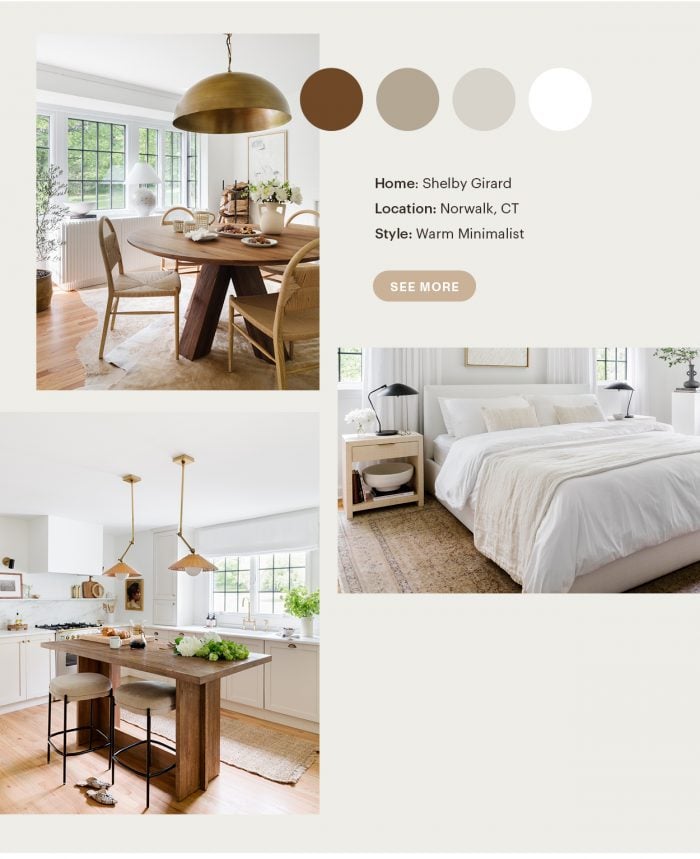
If you’ve yet to be convinced that a neutral color palette does not equal a sterile-feeling or yawn-inducing space, consider this cozy Connecticut home. Its warm neutral palette gives it a sense of cohesion, but more eclectic elements, like playful light fixtures, sculptural side tables, and cozy textiles, give each room its own unique personality.
18. Commit to bold
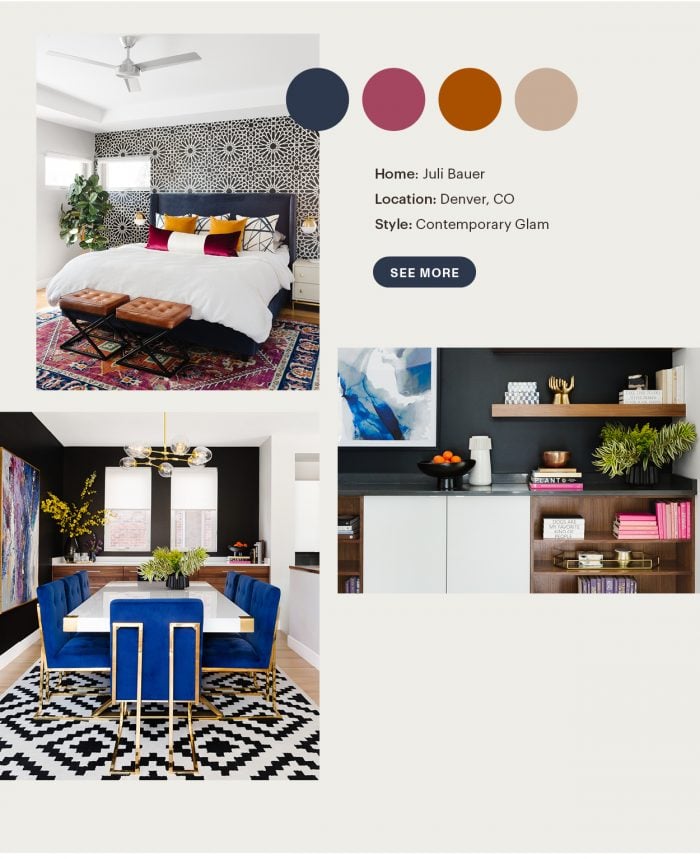
Electrifying colors are not for the faint of heart. So if vibrant, over-the-top color and patterns call to you, be willing to commit. This home is full of plenty of vivid hues and dynamic prints that may seem at risk of clashing — but deliberate pops of black and white pull them all together.
19. Go monochromatic

Here’s a cheat code for creating a relaxing color palette: Just pick one hue and stick with it — just varying the tone to keep things looking interesting. In this coastal-inspired home, blue elements, in varying shades, create a harmonious vibe. With this approach, it’s easy to layer in whichever neutral colors speak most to your sense of style.
20. Select an anchor hue

If you love bold, bright colors, staying within a restricted color palette across your entire home may feel a bit restrictive for your inner maximalist. But you don’t have to use the same hues throughout your whole space. Instead, use a neutral anchor hue — in this case, black — to create a sense of cohesion across many colorful spaces.
From nailing your whole home color palette to perfecting room flow, our designers are chock-full of expert tips. Check out our design packages to work with a design pro one-on-one.

